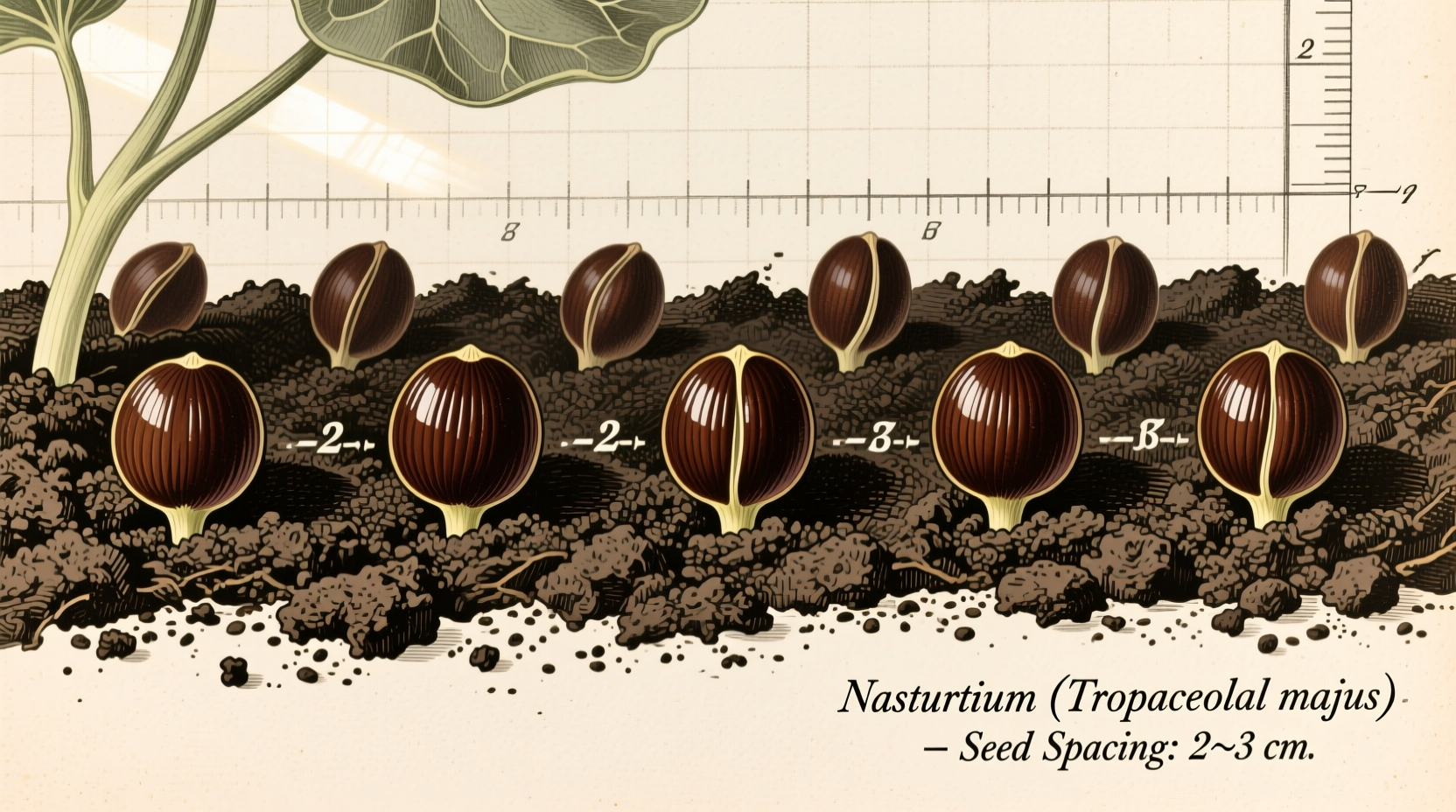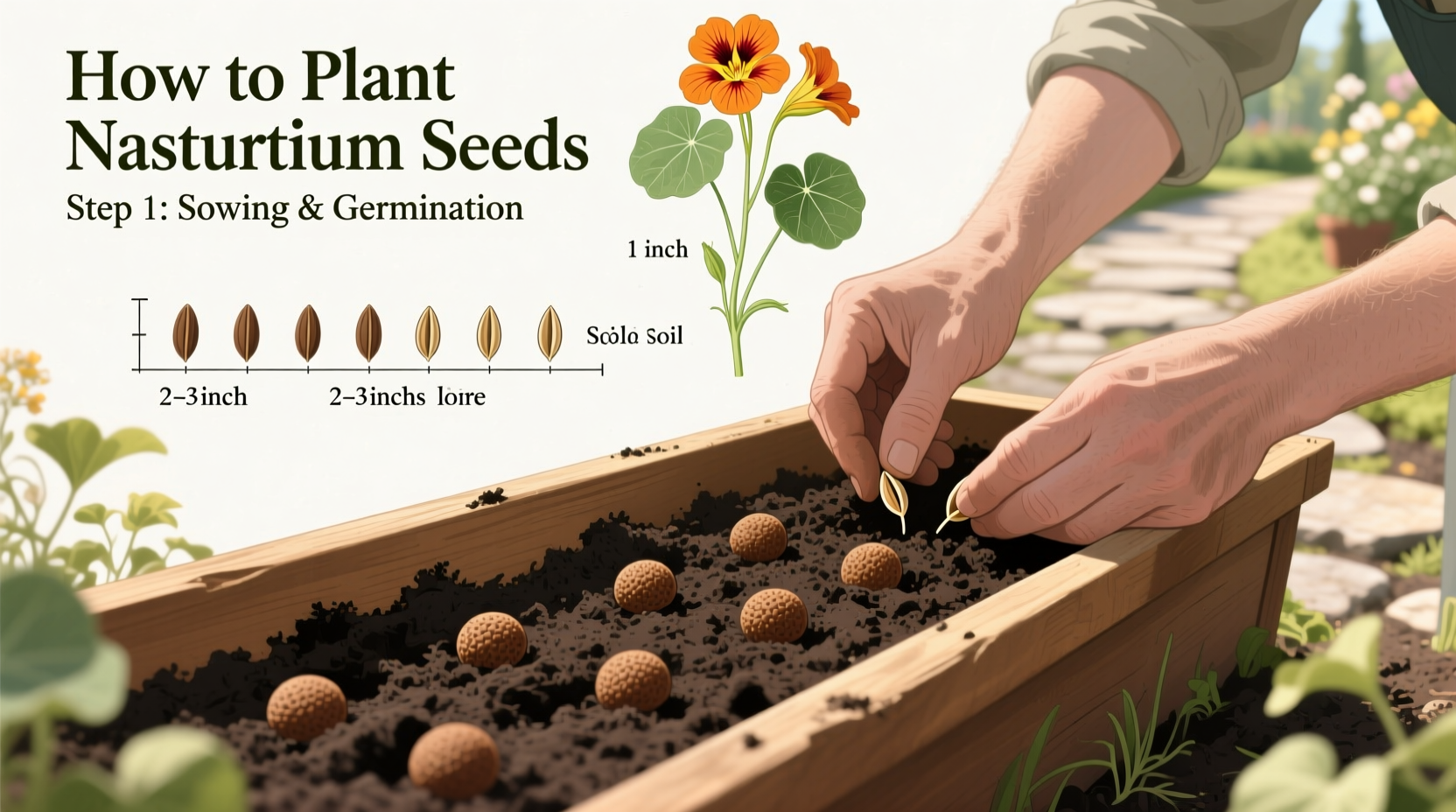Nasturtiums (Tropaeolum majus) are among the easiest flowers to grow from seed, making them perfect for beginner gardeners. These vibrant, edible flowers thrive in poor soil where many other plants struggle, producing beautiful blooms from late spring through first frost. With proper planting technique, you can enjoy their peppery leaves and colorful blossoms all season long.
When to Plant Nasturtium Seeds
Timing is crucial for successful nasturtium cultivation. Plant seeds directly outdoors 1-2 weeks after your last expected frost date when soil temperatures reach 55-65°F (13-18°C). In USDA hardiness zones 2-8, this typically means late spring planting. Gardeners in zones 9-11 can plant in fall for winter blooms.
| USDA Zone | Last Frost Date | Optimal Planting Window | Special Considerations |
|---|---|---|---|
| 2-4 | May 15-June 1 | Early to mid-June | Start seeds indoors 2-3 weeks before last frost |
| 5-7 | April 15-May 15 | Late April to mid-May | Direct sow after soil warms |
| 8-10 | February 15-April 15 | Early spring or fall | Fall planting yields winter blooms |
Essential Pre-Planting Preparation
Nasturtiums actually perform better in moderately poor soil—they produce fewer flowers when grown in rich, heavily fertilized conditions. Prepare your planting area by:
- Loosening soil to 6-8 inches deep with a garden fork
- Removing large rocks and debris
- Amending heavy clay soils with 1-2 inches of compost (avoid fertilizing)
- Selecting a location with 4-6 hours of direct sunlight daily
For container planting, choose pots at least 8 inches deep with drainage holes. Fill with standard potting mix without added fertilizer.
Step-by-Step Planting Instructions
Follow these precise steps for successful nasturtium seed planting:
- Seed preparation: Soak seeds in room temperature water for 8-12 hours to soften the hard outer shell and improve germination rates
- Planting depth: Create holes 1/2 to 1 inch deep (deeper in sandy soils, shallower in clay)
- Spacing: Place seeds 10-12 inches apart for bush varieties, 18-24 inches for trailing types
- Orientation: Position seeds with the pointy end down or the "beak" facing sideways
- Covering: Gently fill holes with soil and pat down lightly—do not compact
- Watering: Water thoroughly but gently to avoid displacing seeds

Nasturtium Growth Timeline
Understanding the growth stages helps manage expectations and proper care:
- Days 1-3: Initial water absorption and seed swelling
- Days 4-7: Root emergence and downward growth
- Days 7-12: First sprouts break through soil surface
- Weeks 3-4: True leaves develop and vine/branching begins
- Weeks 6-8: First flower buds form
- Weeks 8-10: Full blooming begins
According to Cornell University's gardening resources, properly planted nasturtium seeds typically achieve 85-90% germination rates under optimal conditions. Poor germination usually results from planting too deep, cold soil temperatures, or overwatering.
Post-Planting Care for Healthy Plants
Proper care after planting ensures vigorous growth and abundant blooms:
- Watering: Keep soil consistently moist but not soggy during germination; once established, water only during extended dry periods
- Thinning: If multiple seeds germinate in one spot, thin to the strongest plant
- Weeding: Hand-pull weeds carefully to avoid disturbing shallow roots
- Pest management: Nasturtiums naturally repel aphids but may attract cabbage white butterflies—use row covers if needed
Avoid fertilizing your nasturtiums, as excess nutrients promote leaf growth at the expense of flowers. These plants actually thrive in lean soil conditions.
Troubleshooting Common Planting Problems
Address these frequent issues for successful nasturtium cultivation:
- Seeds not germinating: Check soil temperature (must be above 50°F/10°C) and ensure proper planting depth
- Leggy, weak growth: Indicates too much shade or over-fertilization
- Yellowing leaves: Usually caused by overwatering—allow soil to dry slightly between waterings
- Few flowers: Too much nitrogen in soil—reduce watering and avoid fertilizers
Remember that nasturtiums perform best in conditions where many other flowers struggle. As noted by the University of California Master Gardener Program, "Nasturtiums are the rare flowers that actually bloom better in poor soil with minimal care."
Harvesting and Seed Saving
Enjoy your nasturtiums throughout the season:
- Begin harvesting leaves and flowers when plants are well-established (6-8 weeks after planting)
- Pick flowers in the morning for best flavor and longevity
- To save seeds for next year, allow pods to mature on the plant until they turn brown
- Store dried seeds in a cool, dark place in airtight containers
For continuous blooms, practice deadheading by removing spent flowers. This prevents the plant from putting energy into seed production and encourages more flowering.











 浙公网安备
33010002000092号
浙公网安备
33010002000092号 浙B2-20120091-4
浙B2-20120091-4